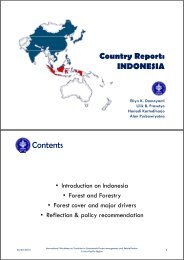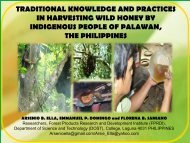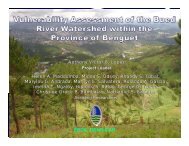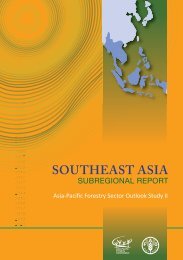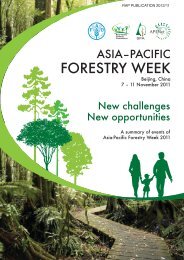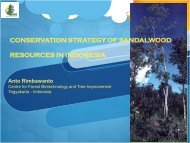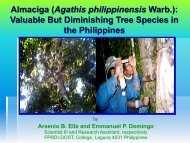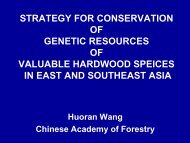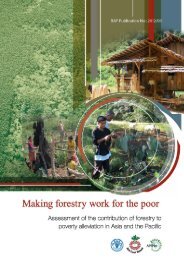Community guidelines for accessing forestry voluntary carbon ... - FAO
Community guidelines for accessing forestry voluntary carbon ... - FAO
Community guidelines for accessing forestry voluntary carbon ... - FAO
You also want an ePaper? Increase the reach of your titles
YUMPU automatically turns print PDFs into web optimized ePapers that Google loves.
ANNEX I<br />
Describe the current<br />
and alternative land use<br />
practices with reference to<br />
existing pilot activities<br />
1a Forest;<br />
It is expected that some proposed project sites will be<br />
converted into woodlots due to the nature of terrain and<br />
low soil productivity. This will increase the total biomass<br />
per area unit and there<strong>for</strong>e also an increased sequestration<br />
of <strong>carbon</strong> and soil <strong>carbon</strong> storage.<br />
1b. Agro<strong>for</strong>estry (shade trees, boundary planting)<br />
This will be the major intervention in the project sites<br />
where trees <strong>for</strong> <strong>carbon</strong> will be integrated into the existing<br />
farming system of intensive cropping of both annual and<br />
perennial crops. Agro<strong>for</strong>estry adds the total number of<br />
trees, which contributes to increased soil <strong>carbon</strong> storage<br />
as well as total <strong>carbon</strong> sequestration.<br />
2. Re<strong>for</strong>estation of degraded temperate grasslands or<br />
arid lands by tree planting<br />
Some of the sites are highly degraded through<br />
overgrazing and cutting of savanna woodlands <strong>for</strong><br />
charcoal production, and re<strong>for</strong>estation will be the main<br />
intervention. Agro<strong>for</strong>estry uses land more intensively<br />
(spatially and temporally) which increases <strong>carbon</strong><br />
sequestration. Growing trees on farm decreases pressure<br />
on common land or natural <strong>for</strong>ests and there<strong>for</strong>e reducing<br />
<strong>carbon</strong> emissions.<br />
3. Establishing tree/shade crops over existing crops<br />
(e.g. coffee)<br />
Some sites are characterized by intensive perennial cash<br />
crops such coffee, tea and even improved pastures. Trees<br />
will there<strong>for</strong>e be introduced to provide shade to the<br />
crops. Agro<strong>for</strong>estry technologies like intercropping/alley<br />
cropping provides potential <strong>carbon</strong> sequestration, which<br />
would not happen in a mono cropping system.<br />
175




